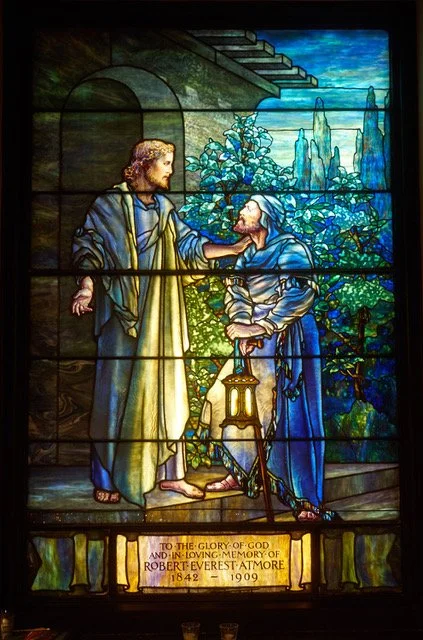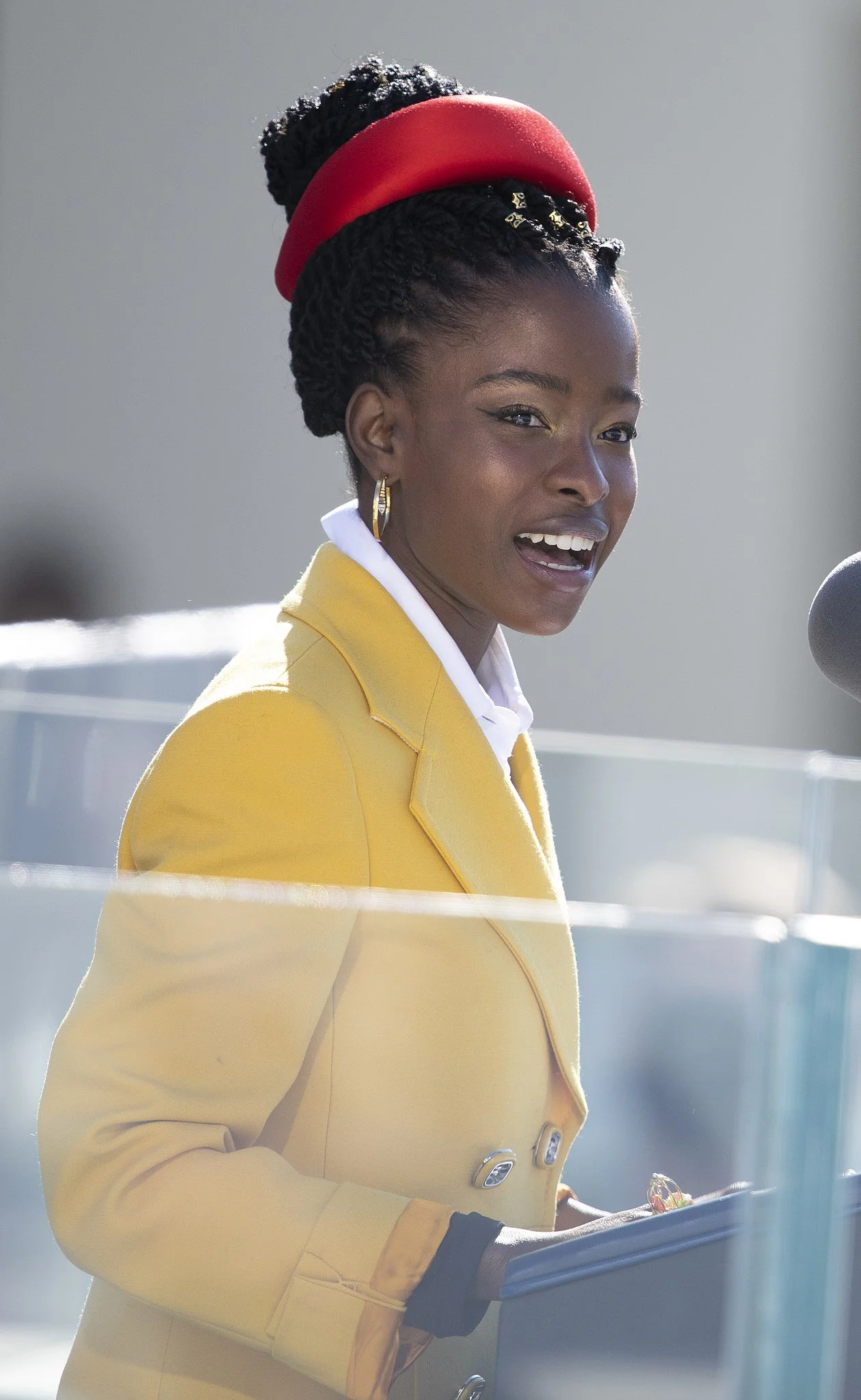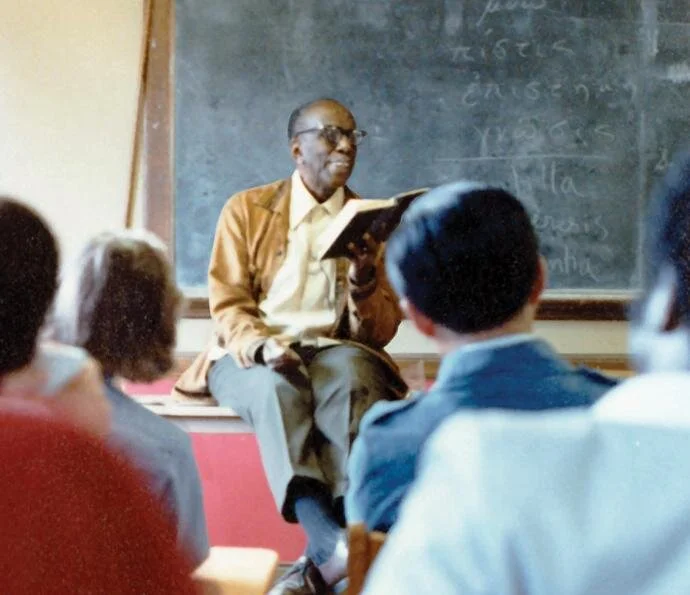Personal journeys in spirituality, faith, and Church – Part 4: Godefroy Cavaignac (1800-1845)
François Rude and Ernest Christophe, Tomb effigy of Godefroy Cavaignac, 1845-47, Montmartre Cemetery, Paris. Photo: author
This 4th distinctive Journey (I just realized!) paradoxically resembles its predecessors in seeking cosmic spiritual bond for humanity. Where the musicians and poet pursued it through shared beauty, French activist Godefroy Cavaignac (1800-1845) sought it through social reform.
Cavaignac interested me for this series because, though from the “Romantic” moment after the French Revolution that we know best for its artists (Delacroix, Chopin, Hugo), he engaged with a darker side of modern life that’s uncannily like ours: the complexities of an industrial world intensified by friction among those holding different social views and positions on worldliness, spirituality, and organized religion.
The radical Cavaignac subverted a period stereotype. Unlike conservatives of his time, he upheld the Christian faith and Church condemned by so many since the eighteenth century—IF their original Oneness with their community were revived and updated in a democratic Christianity for Now.
Using secular language for greater acceptance, Cavaignac suggested a path by which the modern world might open to the God within and embrace Community in Christian love, achieving the hoped-for Oneness.
Cavaignac’s startling tomb effigy illustrated here, an acknowledged Realist landmark contributed by admirers, honors his Christlike self-sacrifice for his beloved people, confident in the democratic future and Christian beyond for all.
Though forgotten today, Cavaignac prefigures outstanding 20th-c. social reformers of faith: Martin Luther King, Jr., Howard Thurman, and Dorothy Day. Like them, he was a committed active contemplative.
This reflection, then, explores a spiritually-driven social campaign through Cavaignac’s activism in two intertwined areas, social and Church reform, sustained by a constantly tested faith.
Jean-Charles Langlois, Godefroy Cavaignac, c. 1835
Cavaignac’s life
Cavaignac absorbed much from his family in the engaged liberal circles of the Enlightenment and Revolution, and evolved with the times. He abandoned the previous generation’s religious neutrality and atheism to embrace the Catholicism revived after the Revolution.
He joined French democrats of the 1830s, dubbed Romantic socialists, who adopted Christianity as a new model for the democracy envisioned by Revolutionaries: a community of diverse individuals, bonded in mutual love, equality, and charity, now with Jesus and the Gospels as their standards in life. These reformers sought justice for those damaged by the evolving industrial world, to harmonize society into what they called communion or unity, the Christian Oneness.
A lawyer and writer by profession, Cavaignac led the liberal bloc throughout France. His power with the word and charisma galvanized workers, notably for the historic silk workers’ strike in Lyon of 1835, earning him and his colleagues repeated trials for sedition. His riveting defenses in court circulated throughout Europe as key manifestos on modern democracy.
The sensitive Cavaignac suffered with his country, urging him onward as his body, frail with tuberculosis, permitted.
Escaped from prison, he roamed in exile for most of his remaining years after 1835, when he led “remotely” and published prolifically. In 1843, he returned to Paris in failing health but persisted until confined to home, drawing thousands of workers (under close police surveillance) to bid farewell before he died at almost 45 in May 1845.
Cavaignac, the new ideal
Cavaignac epitomized the new Christian democrat at work, bringing to life the criteria established by this group’s mentor, philosopher Pierre Leroux, in his seminal Of Humanity (De l’Humanité, 1840). Leaving rhetorical fire for the courtroom and pamphlet, Cavaignac’s accessible humanity, emulating Jesus, won him, as we saw, the love of workers that no other bourgeois activist achieved. So it was, even with political opponents: “ . . . to approach him was to know him, to know him was to admire and love him” (La Réforme, 6 May 1845).
Democrats applauded other attributes that were once unthinkable together. Radical Louis Blanc described him thus: “ . . . this great and lovable spirit, this intrepid heart, this imagination full of light, this admirable assemblage of force and grace, of energy and tenderness, of feminine sensibility and virile pride, of reason and ardor, this nature of a statesman, poet, and knight . . . “ (La Réforme, 6 May 1845).
Yet it’s precisely Cavaignac’s contrapuntal qualities that gave such versatility to what these democrats called his exemplary spiritual humanity, a faculty that made equals of the bonded human and divine—and emanated from the heart.
Cavaignac’s displayed “heart.” Photo: author
As Cavaignac remarked, “Equality is more a love than a system. The brain eventually gets there; it’s the heart that drives and sustains it” (Cavaignac, “De l’humanité . . . [2],” Revue du Progrès, 1 March 1841, 93). He noted this was the democratic counterpart to Jesus’ mandate to love God with all your heart and to love your neighbor like yourself. Spiritual humanity pulled it all together: Unity in all that had been rent asunder, man and God; body and spirit; intuition, imagination and reason; gendered qualities.
That rupture, claimed these democrats, was largely due to the Roman Catholic Church. Increasingly power-hungry as Christianity evolved into sects, the Roman Catholic Church, they argued, fomented superstition, factionalism, and pride.
What now?
Most democratic leaders rejected the Church as unredeemable. Leroux concluded progress had rendered Christianity obsolete, to be replaced by the new religion of humanity, with God immanent in us all and this world only. The abbé Lamennais, an ordained Catholic priest, abjured all faiths and the Roman Catholic Church after repeatedly seeking papal blessing—and failing.
Cavaignac instead upheld the Church, which he condemned in print, with conditions: to adapt its roots to Now. His own funeral was a compelling display of a Way Forward. Rather than the standard elaborate spectacle, Cavaignac’s funeral involved a low-church mass for the dead of the greatest austerity (single priest in unadorned black robes, no funerary decorations, music or bells), a silent procession, and simple burial with family in consecrated ground.
Cavaignac didn’t flaunt his controversial faith. Friends witnessed his silent prayer skyward when anguished at the state of France. He presented his creed in published debate with his own comrades: He rejected old theologies and new alternatives to propose the Christian resurrection as the natural progression in life’s perfectibility, in this case to an improved existence and form (Cavaignac, “De l’humanité . . . [2],” Revue du Progrès, 1 March 1841, 97).
He also acknowledged, in that debate, the great leap the Christian mysteries demanded of the modern mind:
I imagine that, like the father who watches his infant struggle for objects beyond his reach, God smiles indulgently when he sees man stretch for his mysteries. [Where the infant cries if he fails] [m]an gravely contemplates the abyss but will tumble in without tears (Cavaignac, “Humanité [2]”, 97).
Such a willing “tumble” suggests the extraordinary Oneness of this spiritual activist who sought a better future for his troubled world.
—Suzanne Glover Lindsay, St. Stephen’s historian and curator









